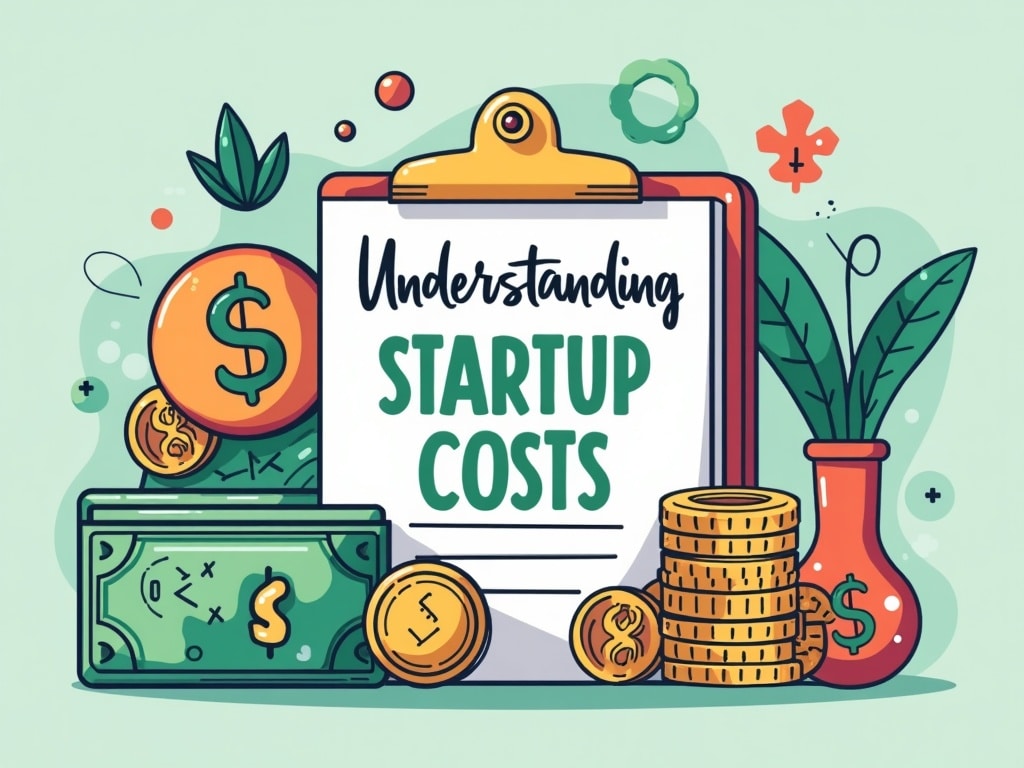How to Start a Business with $1000: Turning Pocket Change into Profit
Imagine turning a mere $1,000 into a thriving business. Sounds like a pipe dream? Not necessarily. While it won’t fund the next tech giant, a thousand dollars, when strategically invested, can be the seed money for a surprisingly wide range of ventures. Forget those misconceptions about needing a fortune to launch; with creativity, resourcefulness, and a healthy dose of hustle, you can absolutely kickstart a profitable business on a shoestring budget. This guide will walk you through the practical steps, highlighting viable business ideas and offering actionable tips to make the most of your limited capital.
The Mindset of a $1000 Startup Founder
Before diving into business ideas, let’s address the crucial mindset shift required. Starting with limited capital demands extreme frugality, relentless problem-solving, and a willingness to wear many hats. You are the CEO, CFO, marketing manager, and customer service representative, all rolled into one. Embracing this reality is the first step towards success. Forget lavish office spaces and fancy equipment; your focus should be on generating revenue quickly and reinvesting strategically.
Focus on Scalable, Low-Overhead Ideas
The key to succeeding with a small initial investment lies in choosing a business model that doesn’t require significant upfront costs. Think service-based businesses, online ventures, or businesses that leverage your existing skills and resources. Avoid businesses with high inventory costs, expensive equipment, or the need for a physical storefront, at least initially.
Embrace the Power of Free
In the early stages, your best friend is the word free. Leverage free marketing tools like social media, free business listing sites, and free design software. Network relentlessly to build connections and find mentors willing to offer advice. Barter your skills with other entrepreneurs to exchange services and save money.
Viable Business Ideas You Can Launch with $1000
Here are several business ideas that can be launched with $1000 or less, along with estimated startup costs and tips for maximizing your budget:
1. Freelance Services (Writing, Editing, Design, Virtual Assistant)
**Startup Costs:Website hosting ($50-$100/year), software subscriptions (free options available, upgrade as needed), marketing materials ($50).
**Tip:Leverage free platforms like LinkedIn to find clients. Offer introductory discounts to build your portfolio. Specialize in a niche to command higher rates.
2. Social Media Management
**Startup Costs:Scheduling tools ($0-$50/month – many offer free trials), online courses for skill enhancement ($0-$100, use free resources initially), marketing materials ($50).
**Tip:Target small businesses that don’t have the resources for a full-time social media manager. Showcase your own social media presence to attract clients.
3. Mobile Detailing
**Startup Costs:Cleaning supplies ($100), detailing equipment (buckets, brushes, microfiber cloths – $150), marketing materials (flyers, business cards – $50).
**Tip:Offer convenient on-site detailing services. Partner with local businesses for referrals. Build a strong online presence with before-and-after photos.
4. Errand Service/Personal Assistant
**Startup Costs:Transportation costs (gas, vehicle maintenance), marketing materials ($50), background check ($20-$50).
**Tip:Target busy professionals, seniors, or families who need help with errands. Offer a variety of services, from grocery shopping to dog walking.
5. Online Courses/Tutoring
**Startup Costs:Software for creating and hosting courses (free options available, upgrade as needed), marketing materials ($50).
**Tip:Choose a subject you’re passionate about and have expertise in. Leverage platforms like Teachable or Udemy to reach a wider audience.
6. Photography (Events, Portraits)
**Startup Costs:If you already own a decent camera: Marketing materials ($50-$100), basic editing software (free options available). If you need a camera: Consider buying a used camera to stay within budget ($300-$500).
**Tip:Offer affordable packages for local events or portrait sessions. Build a strong online portfolio through social media and a simple website.
7. Affiliate Marketing
**Startup Costs:Website hosting ($50-$100/year), domain name ($10-$20/year), marketing costs (can start free with social media).
**Tip:Focus on a niche you’re knowledgeable and passionate about. Create valuable content that solves problems for your target audience. Choose affiliate programs with products or services you genuinely believe in.
Maximizing Your $1000 Investment: Key Strategies
Beyond choosing the right business idea, several strategies can help you stretch your limited capital and increase your chances of success.
1. Bootstrap Everything
Bootstrapping means relying on your own resources and ingenuity, rather than seeking external funding. This forces you to be resourceful, creative, and efficient with your spending.
2. Prioritize Marketing
Even the best business idea will fail without effective marketing. Dedicate a significant portion of your budget to reaching your target audience. Utilize free marketing channels like social media, email marketing, and content marketing. Consider investing in low-cost advertising options like Facebook ads or Google Ads.
3. Network and Build Relationships
Attend industry events, join online communities, and connect with other entrepreneurs. Building relationships can lead to valuable partnerships, mentorship opportunities, and new customers.

4. Track Your Expenses Meticulously
Keep a close eye on your spending and track every dollar that comes in and goes out. This will help you identify areas where you can cut costs and optimize your spending.
5. Reinvest Profits Strategically
As your business starts generating revenue, resist the urge to spend all your profits. Instead, reinvest a portion back into your business to fuel growth. This could involve upgrading your equipment, expanding your marketing efforts, or hiring a virtual assistant to streamline your operations.
Common Pitfalls to Avoid
Starting a business with limited capital presents unique challenges. Here are some common pitfalls to avoid:
**Trying to Do Too Much Too Soon:Focus on one core product or service and master it before expanding.
**Ignoring Customer Feedback:Listen to your customers and adapt your business to meet their needs.
**Underpricing Your Services:Value your time and expertise appropriately.
**Giving Up Too Easily:Building a successful business takes time and effort. Be persistent and don’t get discouraged by setbacks.
Examples of Successful $1000 Startups
Numerous entrepreneurs have successfully launched businesses with just $1000. Consider the story of Sarah, who started a custom jewelry business by selling her creations through Etsy, reinvesting profits into better tools and supplies. Or David, who launched a mobile dog walking business, leveraging local parks and social media to attract clients. These stories highlight the power of resourcefulness and determination.
Turning Pocket Change into a Thriving Enterprise
Starting a business with $1000 is undoubtedly challenging. It requires a unique blend of creativity, frugality, and relentless hard work. But it’s also entirely achievable. By choosing a low-overhead business idea, embracing the mindset of a bootstrap entrepreneur, and implementing the strategies outlined above, you can transform a small investment into a thriving enterprise. The journey may be challenging, but the rewards – financial independence and the satisfaction of building something from the ground up – are well worth the effort. So, take that thousand dollars, ignite your entrepreneurial spirit, and start building your dream business today.




